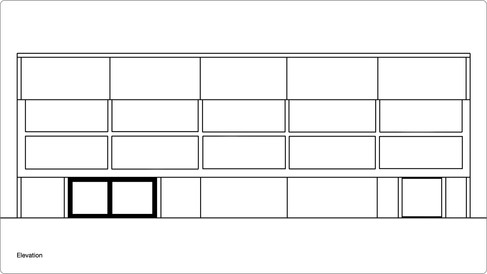AI's Architectural Imaginaries
- Vaishali Jain

- Jul 18, 2023
- 3 min read

This past Spring 2023, I had the privilege of taking 'ARCH 6129 - Form and Narrative: Painting, Film, Architecture' at Georgia Tech under Professor Jude LeBlanc.
Form and Narrative:
The course explored the human experience in relation to design, form, space, and meaning. We delved into the still images of Johannes Vermeer and the moving pictures of Alfred Hitchcock, analyzing how these artists utilized architecture and art to create impactful narratives. We also studied the work of many famous painters like Piet Mondrian, Michelangelo, and Marcel Duchamp, and architects like Mies van der Rohe and Le Corbusier.
Architects, unlike many artists, have an indirect relationship with their medium. The course emphasized this concept, highlighting how architects rely on diverse media – models, drawings, paintings, and digital tools – to communicate their ideas. This exploration underscored the importance for architects to understand the strengths and limitations of various media.The course offered a two-pronged benefit. First, it fostered "cross-fertilization," where insights from one artistic discipline could be applied to another. Second, it provided a valuable understanding of the unique properties and limitations of each medium.
Reimagining the Goetz Collection:
For the final project, we were each assigned a museum building for in-depth study. My assigned project was the Goetz Collection (Sammlung Goetz) in Munich, Germany.


The Goetz Collection is not just a museum; it's a testament to the fusion of contemporary art and visionary architecture. Designed by the acclaimed Swiss architects Herzog & de Meuron, this masterpiece showcases over 5,000 works of contemporary art, spanning conceptual art, minimalism, and Arte Povera.





As I immersed myself in understanding the essence of this architectural gem, I embarked on a journey of discovery, unraveling its design elements, inspirations, and significance within the art world.







Exploring Architectural Imaginaries with Generative AI:
My inquiry focused on the potential of generative AI tools (ChatGPT and Midjourney AI) to aid architects in pushing the boundaries of design.



I used these tools to create:
Imaginary architectural structures and interior spaces inspired by the Goetz Collection building.
Visualizations of how the museum might display the works of renowned artists like M.F. Hussain, Van Gogh, Agnes Chavez, and Olafur Eliasson.
Imagined versions of the building designed by artists like Piet Mondrian or illustrator Josh Crochan.
Variations of the building with different floor counts and spherical elements.
Time Traveling with AI: Exploring Van Gogh's World

Envisioning Agnes Chavez's Data Trees With AI

Exploring Alternate Architectural Realities


AI Envisions Hitchcock's Films on Goetz's Exterior






If Illustrator Josh Crochan Designed Goetz



Training data + Inspiration = Imagination



If Olafur Eliasson Exhibited 'Life' at Goetz



Training data -> Mistakes + Learning = Desired Result


AI Imagining M.F. Hussain's Paintings Adorning Goetz



Training data -> Good Imagination + Learnings -> Better Imaginations

What if Piet Mondrian Designed the Museum?




The Power of AI in Architecture:
This project aimed to showcase how generative AI can be a powerful tool for architects. Here's how AI can benefit the architectural field:
AI can suggest design modifications or alternatives to enhance efficiency and cost-effectiveness.
AI can automate repetitive tasks, allowing architects to explore more design variations quickly.
AI can enable creation of complex and accurate designs.
AI can help tailor designs to specific client needs.
Overall, this project explored the exciting potential of generative AI in aiding architects to create groundbreaking and imaginative architectural experiences.


Credits:













Comments